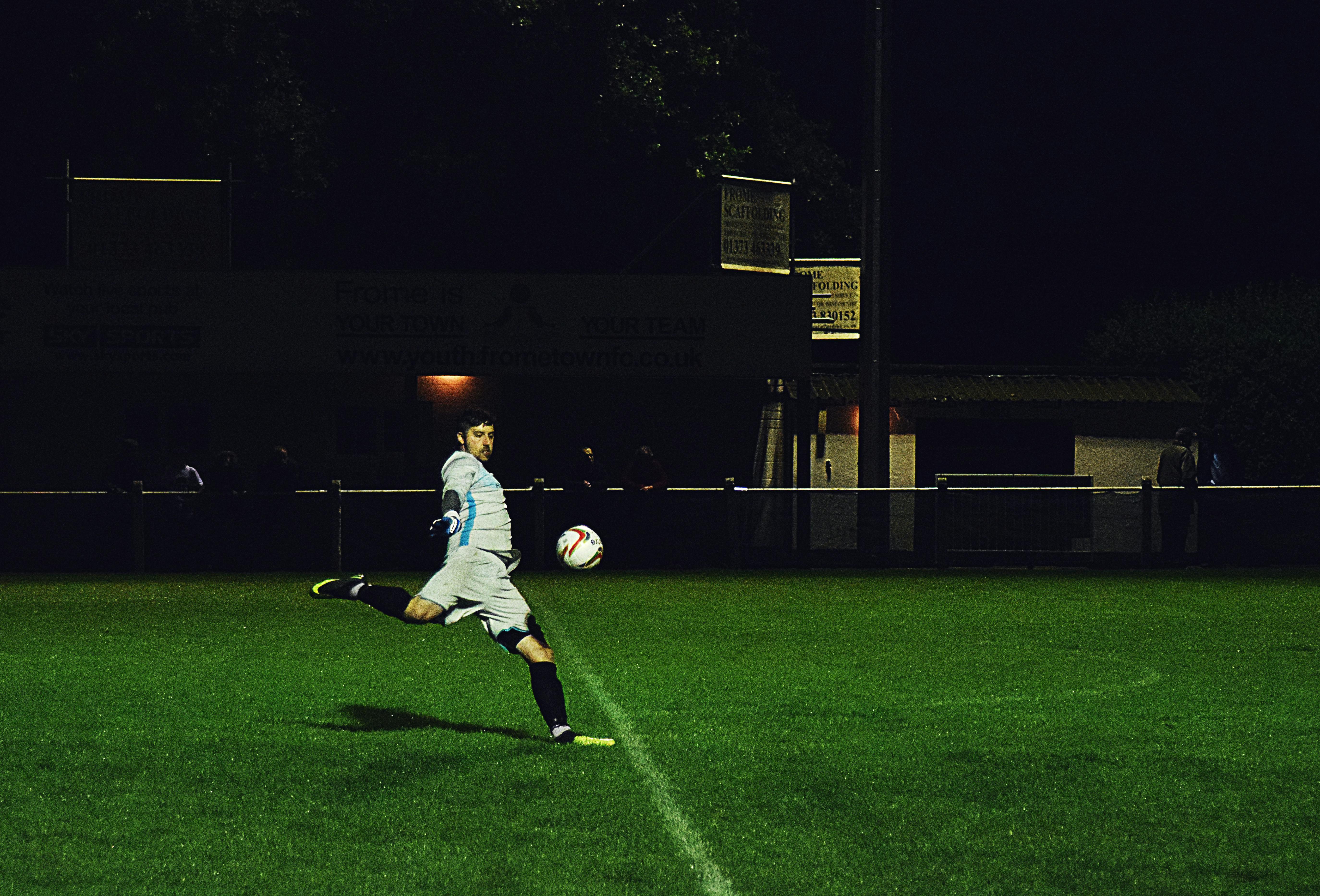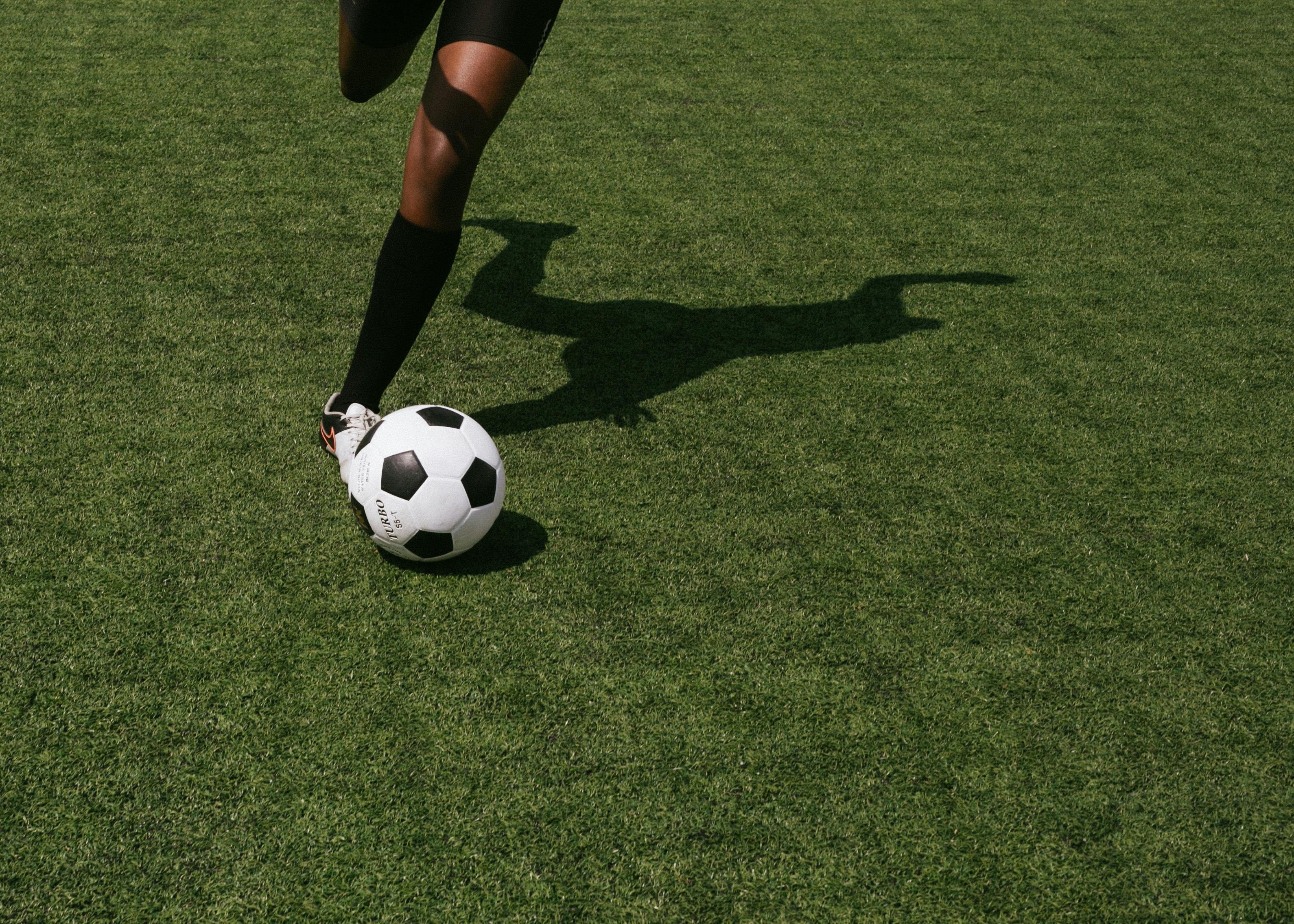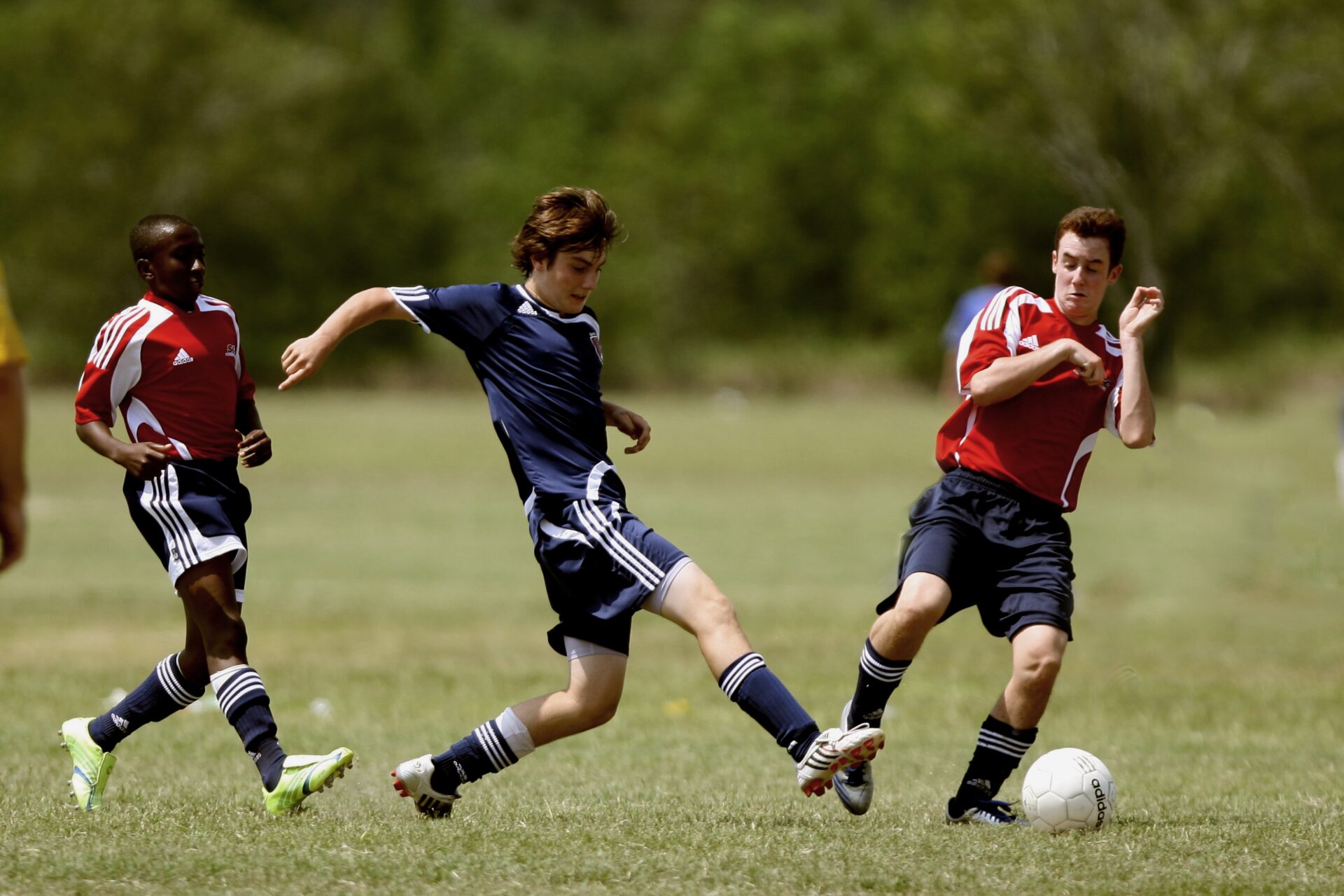Kicking a soccer ball far can be a great way to surprise your opponents on the field. Whether you are an experienced player or just getting started, learning how to kick a soccer ball far will help you take your game to the next level. In this guide, we will discuss the techniques and mechanics of kicking a soccer ball far so you can maximize your power and distance.In order to warm up before kicking a soccer ball, it is important to stretch the muscles in your legs and feet. This can be done by doing some light jogging or walking, as well as dynamic stretches such as leg swings, high knees, and butt kicks. It is also important to warm up your arms by doing arm circles and shoulder rolls. Finally, you should do some quick dribbling drills or practice passing the ball for a few minutes before kicking the ball.
Understanding The Mechanics of Kicking a Soccer Ball
Kicking a soccer ball correctly can be tricky. It requires learning the right technique, practicing regularly, and understanding the physics behind it. The power of a kick and the direction of the ball depend on several factors, including foot placement, body position, and even the surface of the field. Here is an overview of how to kick a soccer ball correctly so you can become a better player.
The first step in kicking a soccer ball correctly is proper foot placement. You should place your non-kicking foot next to the ball with your toes pointing in the direction you want the ball to go. Then, place your kicking foot next to it so that your toes are facing away from your intended target. To get extra power in your kick, you should also lean back slightly while maintaining balance.
Next, you need to understand how to position your body for maximum effectiveness when kicking a soccer ball. Your hips should be slightly open and facing forward while your shoulders remain parallel to where you want the ball to go. This will help ensure that all of your energy is going into the kick instead of being wasted by poor posture or incorrect technique.
Finally, it is important to understand that different surfaces and weather conditions may affect how well you can kick a soccer ball. If playing on grass or dirt fields, make sure that you are wearing cleats or turf shoes for optimal grip and stability when striking the ball with power and accuracy. Additionally, wet weather or mud can make it difficult for some players as these conditions reduce friction between their foot and the ball which may lead to less control over where it goes.
By following these steps and understanding how different factors affect kicking a soccer ball correctly, you can become an expert at striking shots with precision accuracy and power. With practice and dedication, you will soon become one of the best players on your team!
Practice With the Correct Equipment
No matter what sport or activity you are training for, the right equipment can make a big difference in your performance. Having the right tools and gear can help you reach your goals more efficiently and effectively. Whether it’s a football helmet, baseball bat, basketball hoop, or any other piece of equipment, it’s important to find the one that fits your needs best. It’s also important to practice with the correct equipment to ensure safety and proper technique.
Using proper equipment can help prevent injuries by providing support in areas like joints and muscles. For instance, running shoes are designed specifically to provide cushioning and support for your feet so you don’t strain them while running. Basketball hoops are designed to be adjustable so players of all heights and abilities can enjoy the game safely.
The right gear can also improve technique by providing stability and balance while performing certain activities. Football helmets are designed to absorb impact from collisions while keeping players safe from head injuries. Baseball bats are designed with specific weights for different levels of play so batters can generate more power when swinging.
Having quality equipment is essential for any sport or activity, as it will help you stay safe while improving performance. It’s important to do research before making a purchase so you know exactly what type of gear is best for your needs. You should also practice regularly with the correct equipment in order to maximize its potential benefits and ensure optimal results from your training sessions.
Understanding the Basics of Sportsmanship
Good sportsmanship is about understanding the rules of the game, treating opponents with respect and playing fairly. It also involves being humble in victory and gracious in defeat. Sportsmanship is an important part of any sport and it’s essential for players to learn how to be good sports from an early age. Teaching kids about good sportsmanship can help them develop important life skills like teamwork, discipline and respect for others.
Encouraging Respectful Behaviour
It’s important to encourage respectful behaviour on the field or court, both from players and spectators. This means teaching children to be respectful of their opponents, no matter what the outcome of the game may be. Encourage children to shake hands after a game, regardless of who won or lost. Remind them that it’s just a game and that no one should take victory (or defeat) too personally.
Developing Good Communication Skills
Good sportsmanship also involves developing good communication skills. Players should learn to communicate effectively with their teammates as well as opposing teams during a match or game. This means learning how to listen as well as talk, understanding how body language can affect communication and learning how to give constructive criticism in a positive way.
Teaching Fair Play
Fair play is another important aspect of good sportsmanship and is essential if players are going to learn how to work together as a team. Teach children not to take shortcuts when playing games – this can lead to bad habits that will follow them into adulthood. Encourage kids to be honest when playing games – if they make a mistake, they should admit it rather than trying to cover it up or blame someone else for it.
Emphasizing Good Attitude
Having a positive attitude is an important part of good sportsmanship too – even when things aren’t going your way on the field, having a positive outlook can help keep spirits up among teammates and opponents alike. Encourage kids not to get angry or frustrated when they make mistakes or don’t perform well – instead, teach them how to learn from their mistakes and move on with a positive attitude.
Developing Proper Techniques
Finally, encouraging proper techniques is an essential part of teaching good sportsmanship in any sport. Teach kids proper techniques for handling equipment, such as bats or racquets; for running; for shooting; for dribbling; etc., so that they are playing safely and using correct methods while participating in their chosen sport. This will help ensure that everyone is playing fair while having fun at the same time!
Aim at the Right Target
When it comes to achieving success, it is important to have clear goals and objectives. Achieving success requires careful planning and setting achievable targets. It is important to set realistic goals that can be achieved within a certain time frame. By setting achievable targets, you can focus on achieving them one by one and eventually reach your desired goal.
It is also important to identify the right target for your success. By understanding your strengths and weaknesses, you can identify the areas that need improvement and focus on those areas. For example, if you are trying to improve your public speaking skills, you should focus on improving your delivery skills, body language, and overall presentation style. This will help you become a better public speaker and eventually reach your goal of becoming an effective communicator.
In addition, it is important to stay motivated when aiming for success. Setting achievable goals is only half of the battle; staying motivated is essential for reaching those goals. It is important to reward yourself for each small step along the way in order to stay focused and driven towards achieving your ultimate goal.
Finally, it is important to remember that success doesn’t happen overnight; it takes hard work and dedication to reach your desired goals. Aiming at the right target will help you focus on what needs to be done in order to achieve success in any area of life.

Plant Your Foot Firmly in the Ground
It is natural for us to feel overwhelmed and discouraged when faced with obstacles in our lives. But instead of letting them affect us, it is important to take a step back and firmly plant our feet on the ground. Taking a firm stand and being rooted in conviction can help us work through our struggles more effectively. We can also find strength in knowing that we are not alone, as there are always people who have gone through similar experiences that we can turn to for guidance and support.
It is also helpful to remember that no matter how hard things may seem, there is always hope for growth and progress. In difficult times, it is important to stay grounded and focused on what we can do instead of worrying about what we cannot change. This means taking responsibility for our actions, setting boundaries, finding sources of motivation, and developing skills that will help us become resilient.
Another way to stay rooted in our convictions is to keep an open mind when it comes to learning new things. Being able to learn from different perspectives gives us the opportunity to understand our own beliefs better and make decisions that reflect our values. By actively engaging with different ideas, we can also come up with creative solutions that will help us move forward despite any challenges we may face.
Finally, it is important to stay connected with those around us who have shared experiences or similar goals so that we can continue to learn from each other’s journey. By building strong relationships with people who understand where we are coming from, we can gain perspective on difficult situations and continue striving towards our goals with clarity and confidence.
At the end of the day, planting your foot firmly in the ground will help you stay grounded even when life throws you curve balls. It’ll give you strength when you feel like giving up, it’ll give you direction when you feel lost, and it’ll give you hope when everything seems bleak.
Follow Through With Your Swing
It is important to remember to follow through with your swing when playing golf. Doing so will help ensure that your ball goes where you intended it to and that you get the most out of your shot. Following through with your swing ensures that all the power in your swing is transferred to the club head and ultimately the ball. When you don’t follow through, some of the power in your swing gets lost and the ball won’t travel as far or as straight as you would like it to.
In order to follow through with your swing, you need to make sure that you keep your arms, wrists, and hands extended after making contact with the ball. This will help ensure that all of the power in your swing is transferred into the ball and not wasted. Additionally, make sure that you are keeping your head down throughout the entire motion of the swing until after you have completed your follow through. Keeping your head down helps maintain balance and helps ensure that you are swinging correctly.
You should also practice following through with a slow motion drill at home before heading out on course. This will help ingrain proper technique into muscle memory so that when it comes time for a real golf shot, you will be able to execute properly without thinking too hard about it. Make sure that during this drill, you are focusing on keeping good posture, keeping your arms extended after contact with the ball, and maintaining good balance throughout the entire motion of the swing until after completing the follow through.
Finally, make sure to check with a golf professional if you are having trouble following through with your swings or if something feels off during a round of golf. A professional can help diagnose any issues and provide tips on how to fix them so that you can become a better golfer in no time!
Generate Power From Your Hips and Core Muscles
Generating power from your hips and core muscles is an essential part of any athletic activity. It is the foundation of proper movement, allowing you to move efficiently and with greater force. You can improve your power generation by strengthening your hips and core muscles, as well as improving your technique.
First, you should focus on strengthening your hips and core muscles. This can be done through a variety of exercises such as squats, lunges, deadlifts, and hip thrusts. These exercises will help to build strength in the hips and core muscles, which will allow you to generate more power when you move. Additionally, these exercises will help to improve flexibility in the hip region, which could further help with power generation.
Next, it is important to work on technique in order to generate maximum power from your hips and core muscles. Proper form is essential for maximizing power output; this means making sure that you are keeping your spine neutral throughout the movement while pushing through the heels or toes while maintaining a stable base of support. Additionally, it is important to engage the glutes throughout all movements in order to generate maximum power from the hips.
Finally, it is important to practice regularly in order to ingrain proper movement patterns into muscle memory so that they become second nature when performing a sport or exercise activity. Practicing regularly will also allow for better coordination between various muscle groups which could lead to improved power output overall.
In summary, generating power from your hips and core muscles is an essential part of any athletic activity. Strengthening these areas through specific exercises as well as improving technique can lead to better performance in any sport or exercise activity that requires powerful movements. Additionally, practicing regularly will further improve coordination between various muscle groups and help solidify proper movement patterns into muscle memory so that they become second nature when performing a sport or exercise activity.

Conclusion
Kicking a soccer ball far is an achievable goal. It requires practice and patience, but the results can be very rewarding. With the proper technique and the right equipment, it is possible to kick a soccer ball far with accuracy and power. The information provided in this guide should give you the tools you need to become an expert kicker with a powerful kick.
Remember that kicking a soccer ball is not just about power; it is about accuracy as well. You need to have a good understanding of the techniques involved in order to be successful. Spend some time practicing your kicking technique and soon you will find that you can kick a soccer ball far with accuracy and power.




